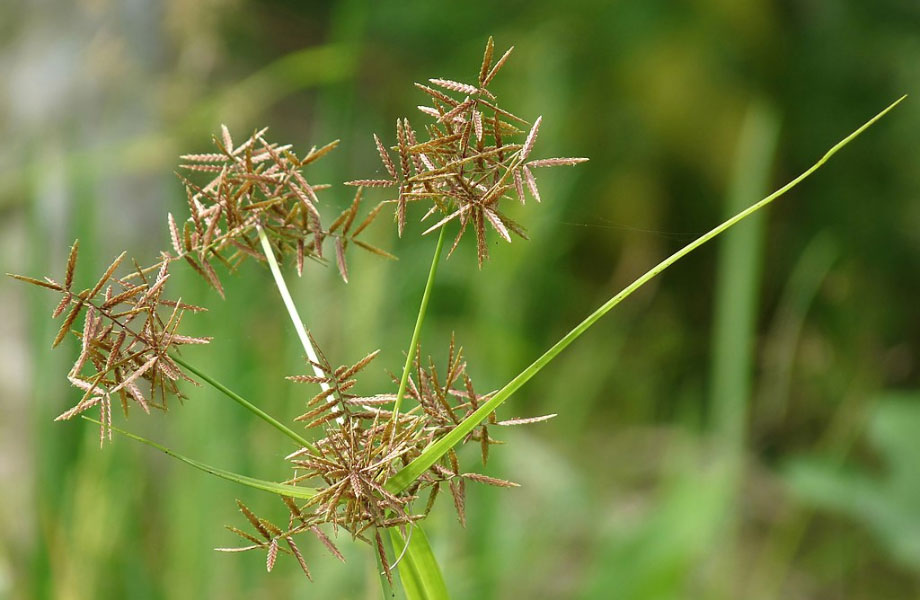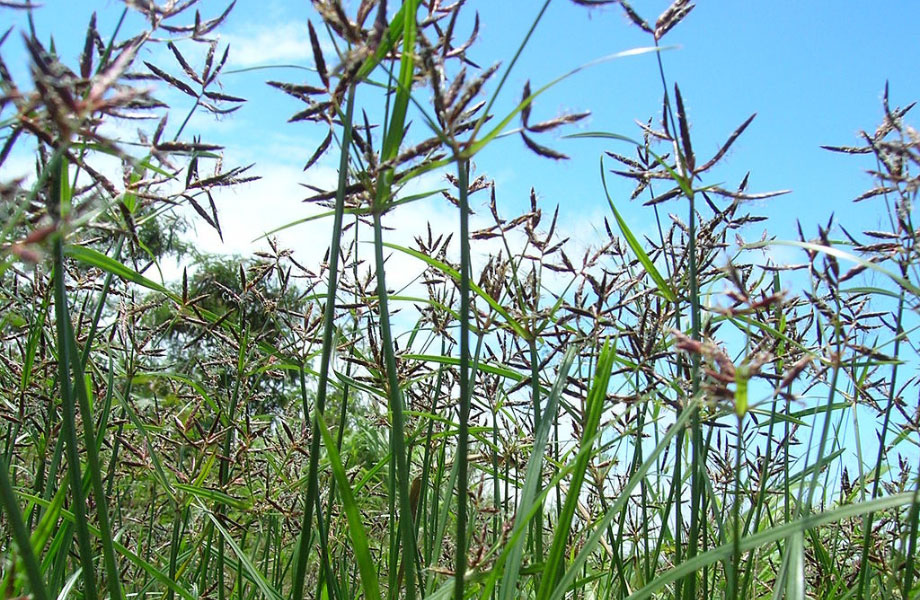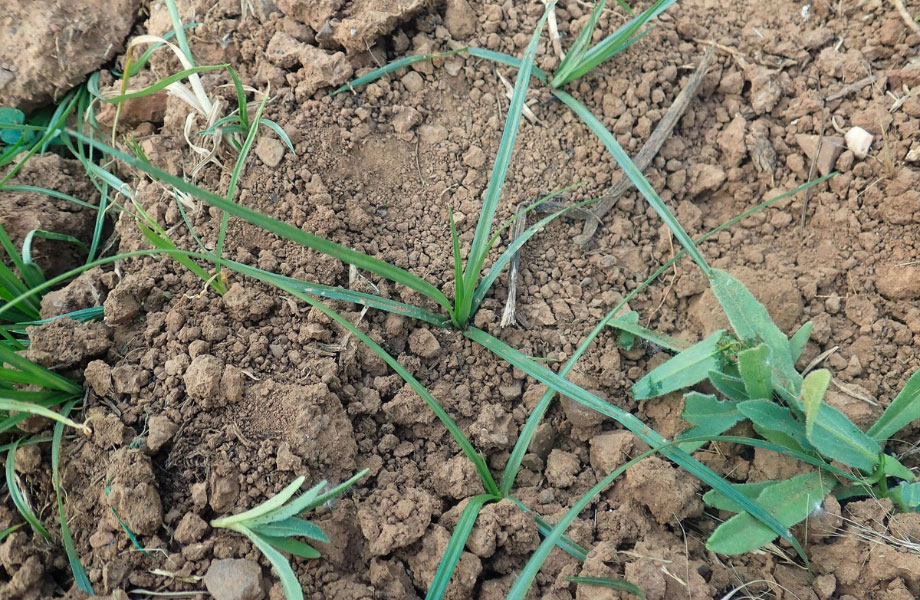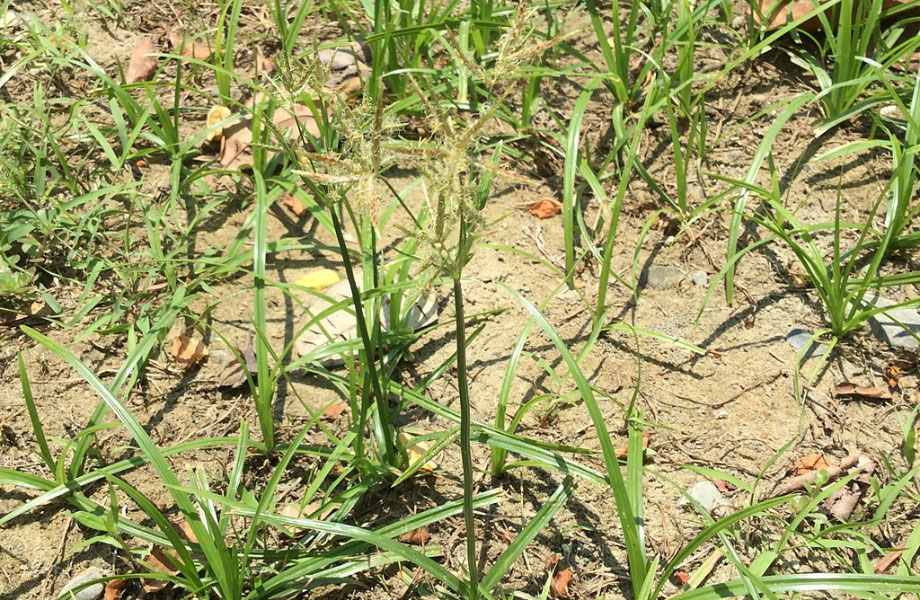Nut grass has been called the worst weed in the world. Also known as ‘nutsedge’, nut grass is the enemy of your lush, healthy green lawn. It’s not dangerous – but it’s definitely bad for your lawn. And it’s difficult to get rid of. It grows extremely rapidly, so once it takes hold, the race is on to get rid of it.
What is nut grass?
Nut grass is an exotic, perennial, grass-like plant that grows an underground network of stems with small tubers. Each tuber is about 10-25 mm long with stems creep underground. Above ground, the flowering steps grow upright to between 20-50 cm tall. And it most often flowers in summer and autumn.
Nut grass reproduces through its creeping underground stems and tubers. And because of this it is highly invasive and very difficult to get rid of. It spreads underground and then the tubers can remain dormant in the soil (but viable) for quite a few years. Then just when you think you’ve taken care of the problem they can suddenly start growing again.
Nut grass is bad because it competes with your lawn and other plans for moisture and nutrients in the soil. It will also compete with slower-growing plants for access to light. And this means a less healthy, slower growing and more disease prone lawn.
How does nut grass get into my yard
Nut grass is usually introduced to a backyard in contaminated soil for top dressing lawns or for garden beds. Because nut grass reproduces underground, its creeping stem and tuber network can also infiltrate your lawn from adjacent footpaths, garden beds or parks.
What does nut grass look like
Nut grass gets its common name from the ‘nut like’ tubers on its underground stems. Its flowering stems are a lighter green than lawn grass, and it grows much taller than grass blades – usually between 20-50 cm in height. Nut grass has three flowering blades that grow up from the stem. The flowers can be reddish-purple in colour.
Underground, nut grass tubers are dark brown to black. They are irregularly shaped and grow to about 2 cm. Each tuber has multiple buds.
What are other names for nut grass
Nut grass is also known as nutsedge, Java grass, coco grass, red nut grass and ground almond. There may be more names that you’ve come across!
Where is nut grass found
Nut grass is an exotic plant which is now widely naturalised in Australia. It is common in south-east Queensland, as well as in other states. It has also naturalised on Norfolk Island, Lord Howe Island and Christmas Island.
Is nut grass dangerous to dogs
Nut grass is invasive and difficult to get rid of – but it’s not dangerous. Dogs like to eat nut grass – along with lawn grass – and vets believe it can help to settle an upset stomach.
How to get rid of nut grass
If your background is feeling overrun with nut grass, don’t despair. Keep on reading!
When it’s only a small amount
Nut grass is treatable, but it’s best to act quickly, before it spreads too far. If your yard has only a small amount of nut grass, the easiest way to remove it is by digging it out. Use a small spade so you can focus on one area at a time. Go carefully, be thorough and check to make sure there are no roots or tubers left in the soil.
When it’s a large amount
Wondering how to get rid of nut grass that is threatening to overwhelm your lawn? Getting rid of a large amount of nut grass takes a much greater level of determination and commitment. And it generally requires treatment with a post-emergent herbicide. You need to completely kill the tubers, which may require several applications of herbicide.
Choose a selective herbicide like Amgrow Sedgehammer. Follow the instructions and continue with staggered applications until you are certain that the nut grass has completely gone.
How to protect your lawn from nut grass
Nut grass thrives in hot conditions and in soils with poor drainage. So being familiar with your lawn, and keeping an eye on any trouble-spots is a great way to protect your lawn from nut grass. Making sure that it stays healthy, well drained and thriving is another great way to maintain your lawn and guard against nut grass taking hold. Our top 5 lawn care tips is a good place to start.
No matter what’s going on in your backyard, we can help to save your lawn. So, at the first sign of nut grass, get in touch with us to help you act to get ride of it from your yard completely. And don’t forget to keep an eye on our product info page for more backyard ideas, and our how to page for more helpful posts like this one.













